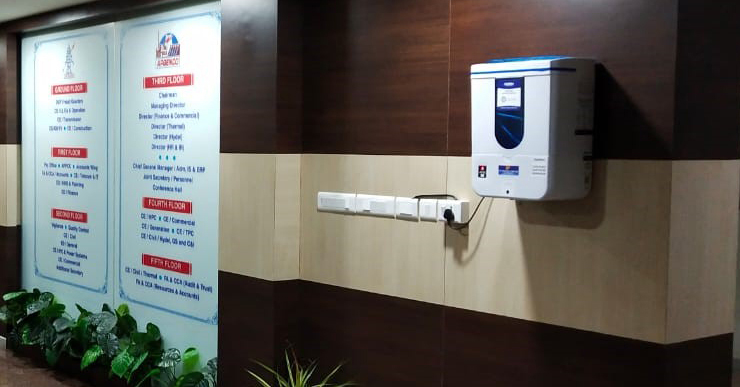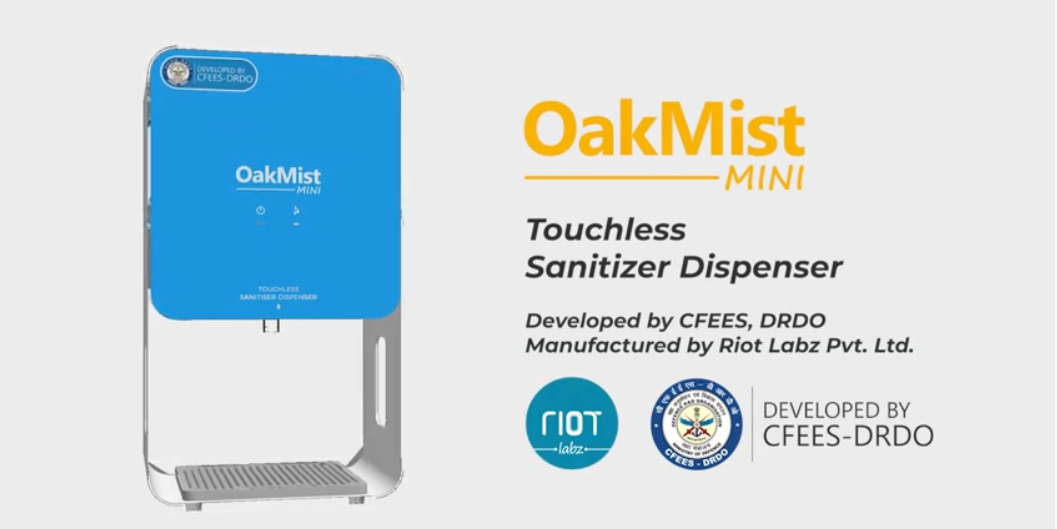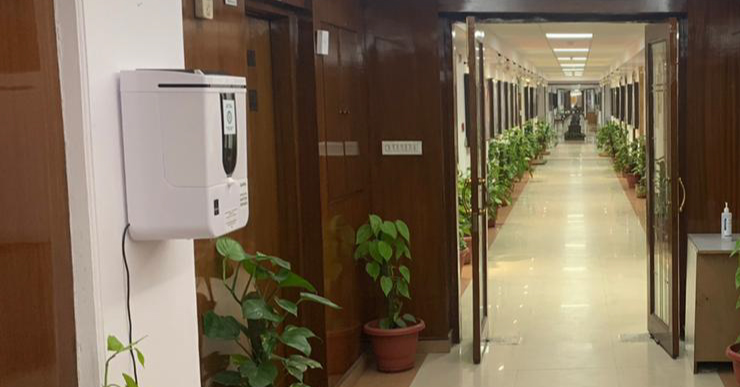
COVID Safety 101: Key Safety Protocols to Follow When Reopening Workplaces
As the government lifts lockdown restrictions and allows businesses to reopen, there is apprehension along with excitement. Organisations have to follow essential safety protocols laid out by the government, but at the same time, devise measures that are ideal to the workplace. What is needed is the effective management of the situation through the new Standard Operating Procedures(SOPs) that prioritise safety. Strict following of safety guidelines is a must to instil confidence in employees and motivate them to work safely and without fear.
Safety Practices Every Workplace Should Follow
Coronavirus is an invisible enemy. It is highly contagious and can rapidly spread while sneezing and coughing, and through physical contact. So, for public spaces like offices, the real challenge is to maintain as much social distancing as possible and to adhere to other necessary safety measures.
So, here are some key safety protocols every organisation should strictly follow:
Preparation:
 The key to every battle is to hope for the best and prepare for the worst. Similarly, a safe workplace is born from well-calculated and thorough preparations.
The key to every battle is to hope for the best and prepare for the worst. Similarly, a safe workplace is born from well-calculated and thorough preparations.
The first thing to do is sanitize the entire office premises, interiors and exteriors, at least a day before the reopening. Ensure every nook and corner should be disinfected. It is also time to reorganise the workspace layout to ensure social distancing. The thumb rule is to maintain a distance of at least 6 feet. If that is not possible, install look-through glass/fibre separators between desks.
There has to be sufficient stock of protective equipment including face masks, face shield, hand gloves, hand sanitizer and PPE (Personal Protective Equipment), especially for the front desk staff who regularly come in contact with visitors.
Even if you work with minimal staff, in a workplace, there are high chances of multiple hands touching surfaces. Think of strategies and equipment to minimise physical contact. A great idea would be to install automatic, touchless hand sanitizer dispensers at the entrance, inside the office and also in bathrooms. Opt for wall-mounted, compact hand sanitizer dispensers as they are convenient and easy to use.
 The Oakmist Plus and OakMist Mini are popular and highly effective automatic hand sanitizer dispensers in India. They are developed in association with the DRDO (Defence and Research Development Organisation). Oakmist is advanced, convenient to install and works on mist-based technology. The mist sanitizer is very effective and gives excellent coverage. Oakmist is now used in the Supreme Court of India, PMO, Rashtrapati Bhavan, other government offices as well as private organisations. As reports suggest that coronavirus may linger on surfaces for hours to even days, hands-free technology should be a must for workplaces.
The Oakmist Plus and OakMist Mini are popular and highly effective automatic hand sanitizer dispensers in India. They are developed in association with the DRDO (Defence and Research Development Organisation). Oakmist is advanced, convenient to install and works on mist-based technology. The mist sanitizer is very effective and gives excellent coverage. Oakmist is now used in the Supreme Court of India, PMO, Rashtrapati Bhavan, other government offices as well as private organisations. As reports suggest that coronavirus may linger on surfaces for hours to even days, hands-free technology should be a must for workplaces.
Apart from offices, the metro railway and shopping malls and other public places are also reopening. After 169 days, Delhi Metro Railways resumed their services on 7th September. However, a lot of health and safety protocols were put into effect keeping in mind the coronavirus situation. Various precautions like strict adherence to the use of face covers and sanitizers, adequate social distancing, travel through smart cards only, thermal screening, etc. have been put in place by the DMRC. As a key component of these measures, OakMist hand sanitizer dispensers were installed at the stations where passengers are obligated to sanitize their hands at the start and end of every journey.
Early morning photos from the Yellow Line today! Travel only if needed. #MetroBackOnTrack pic.twitter.com/90UnRn54Bz
— Delhi Metro Rail Corporation I कृपया मास्क पहनें? (@OfficialDMRC) September 7, 2020
Here are some important office and public place safety practices:
- Regularly sanitize commonly touched surfaces such as doorknobs, workstations, keyboards, handrails, telephones and stationeries.
- A separate disinfection plan for vehicles is required to ensure proper sanitization of the door handles, steering wheel, seats and also, the keys.
- Set the air conditioner in the range of 24-30 degree Celsius and the relative humidity between 40% and 70%.
- Ensure that all employees have the Aarogya Setu App installed on their phones.
- If you have been using biometric devices to record attendance, discontinue it for now. Try any other online ways for the purpose.
Watch:
The new norm calls for innovative practices to ensure safety. For example, some offices have installed foot pedals to open doors to avoid touching doors by hand. Some organisations have set up ‘disinfection tunnels’ through which the employees have to enter wherein they will be sprayed with a bio-neutral sanitizer.
There have been studies that show that places with proper ventilation have better chances of staying protected from the virus, as it doesn’t spread that easily in such spaces. Ensure offices are well-ventilated. One of the guidelines released by the Indian Society of Heating Refrigerating and Air Conditioner Engineers (ISHRAE) is to reduce infection risk through ventilating indoors with outdoor air.
Installing air filters can also be helpful. Another vital point to follow is setting It is also necessary to check out government guidelines for workplaces as they are must-practices to follow. For example, the government has made it mandatory for employees returning to work to install the It will help employers to find from which zone the staff is coming and know what extra precautions to follow.
No matter how many strategies are in place, it is better to work with minimal staff. Encourage flexible working time but with minimal disadvantages to your work.
Regular Practices at the Office:
 It goes without saying that mandatory check of body temperature of employees using non-contact measurement devices every day at the entrance itself is a must.
It goes without saying that mandatory check of body temperature of employees using non-contact measurement devices every day at the entrance itself is a must.
Now, the first thing to do is instil confidence in your staff through a pep-talk and not make the safety instructions too imposing. On the first day, conduct a workshop on the protocols and the safety guidelines to be followed. If need be, remind them daily. Sparing five minutes every day to ensure everyone’s safety is worth it.
Companies are toying with many ideas to bring home the message. Online training, animated videos, posters, and fliers on new workplace behaviours and the dos and don’ts list can reinforce the message. Some are even appointing a special team for the purpose.
Maintain social distancing at all costs. Also, ensure common places such as lifts, cafeteria, and other areas are not crowded at any time.
Now to the meetings! Conduct those round-table meetings only if unavoidable. Some offices are conducting online meetings, even inside the offices. If face to face interaction is needed, then minimise meeting duration, observe social distancing, and conduct meetings in an open place where there is maximum ventilation. Make sure that every attendee wears a mask. Use hand sanitizers at regular intervals.
Dos and Don’ts for Staff:
 Counsel your staff and encourage them to inform if anyone from their family or neighbourhood has COVID-19. Ask them to remind themselves before starting their day about the safety precautions to be followed. If need be, print a series of instructions about self-care and display across the premises.
Counsel your staff and encourage them to inform if anyone from their family or neighbourhood has COVID-19. Ask them to remind themselves before starting their day about the safety precautions to be followed. If need be, print a series of instructions about self-care and display across the premises.
Put on your face mask and hand gloves and encourage the staff to do so as well. Only wearing the mask won’t help. Do not touch it with your hands or remove it while talking and instruct your staff to follow the same. Keep a hand sanitizer with everyone’s desk. Make sure everyone disinfects their desk, computers, etc. at regular intervals.
Do not forget to maintain social distancing. Everyone should be asked to carry home-cooked meals and water bottles as it is not only healthier but also a good way to reduce the risk. Individual spoons and mugs should be carried. Avoid face to face communication as much as possible.
Please note that you will have to adhere to every safety guidelines for some time now. Never assume there is no threat.
In Case of an Emergency:
Despite taking precautionary measures, chances of infection cannot be ruled out. If anyone from your office is ill, then contact a doctor immediately. Isolate the person and provide them with a mask. Report the case to the health department/ municipal authorities.
Also, businesses do not have to worry about closing down in case a member gets infected. The government assures that the places will not be declared as a containment zone. Instead, the place will be sanitised and allowed to function after 12 hours.
Given the current situation, the new norms will be in contrast to the definition of a traditional office set-up for quite some time now. Fewer employees, minimal social interaction, lesser direct communication and teamwork through virtual apps, social distancing will be a little difficult to accept and adjust to for most. As in work, team spirit is essential to ensure COVID-19 safety precautions are in place and that they are followed to the T. Combating the virus can be easier when everybody is on the same page with respect to safety precautions. The key is to survive against the odds, and here, it is not the fittest but the most cautious who will win the battle!

